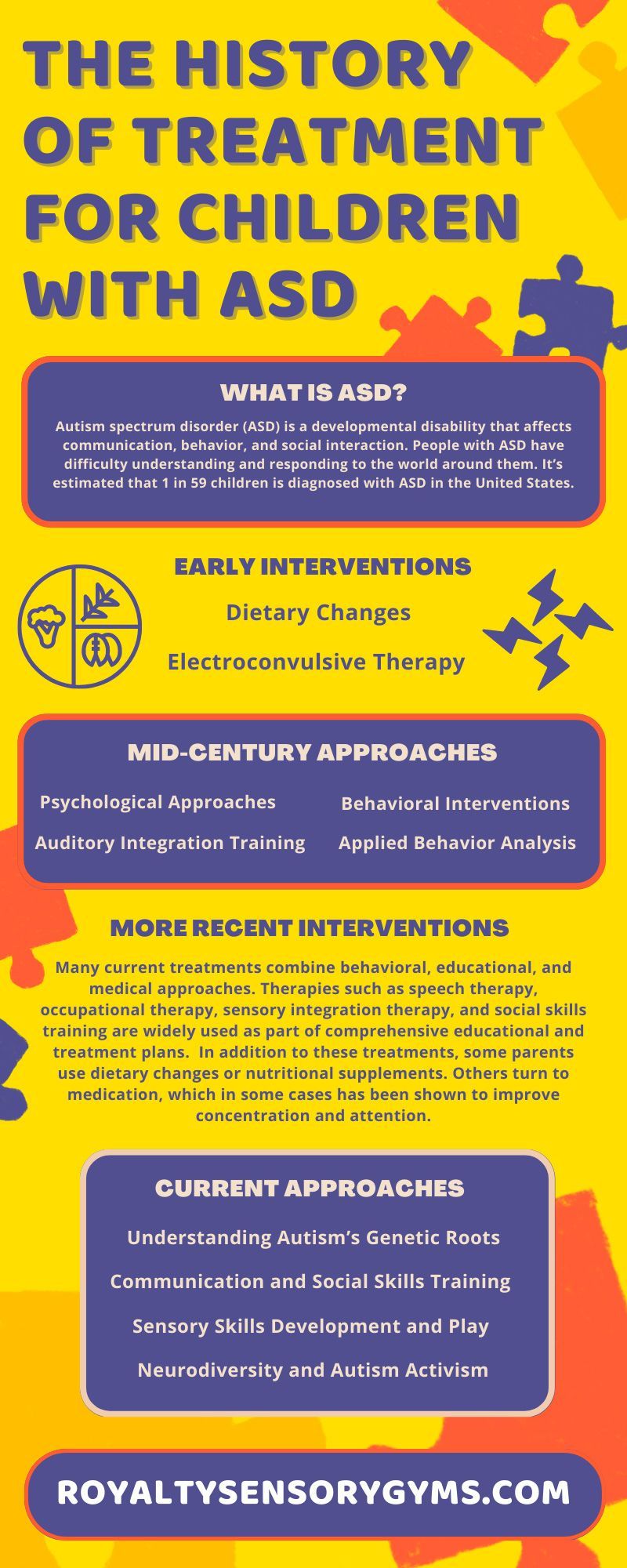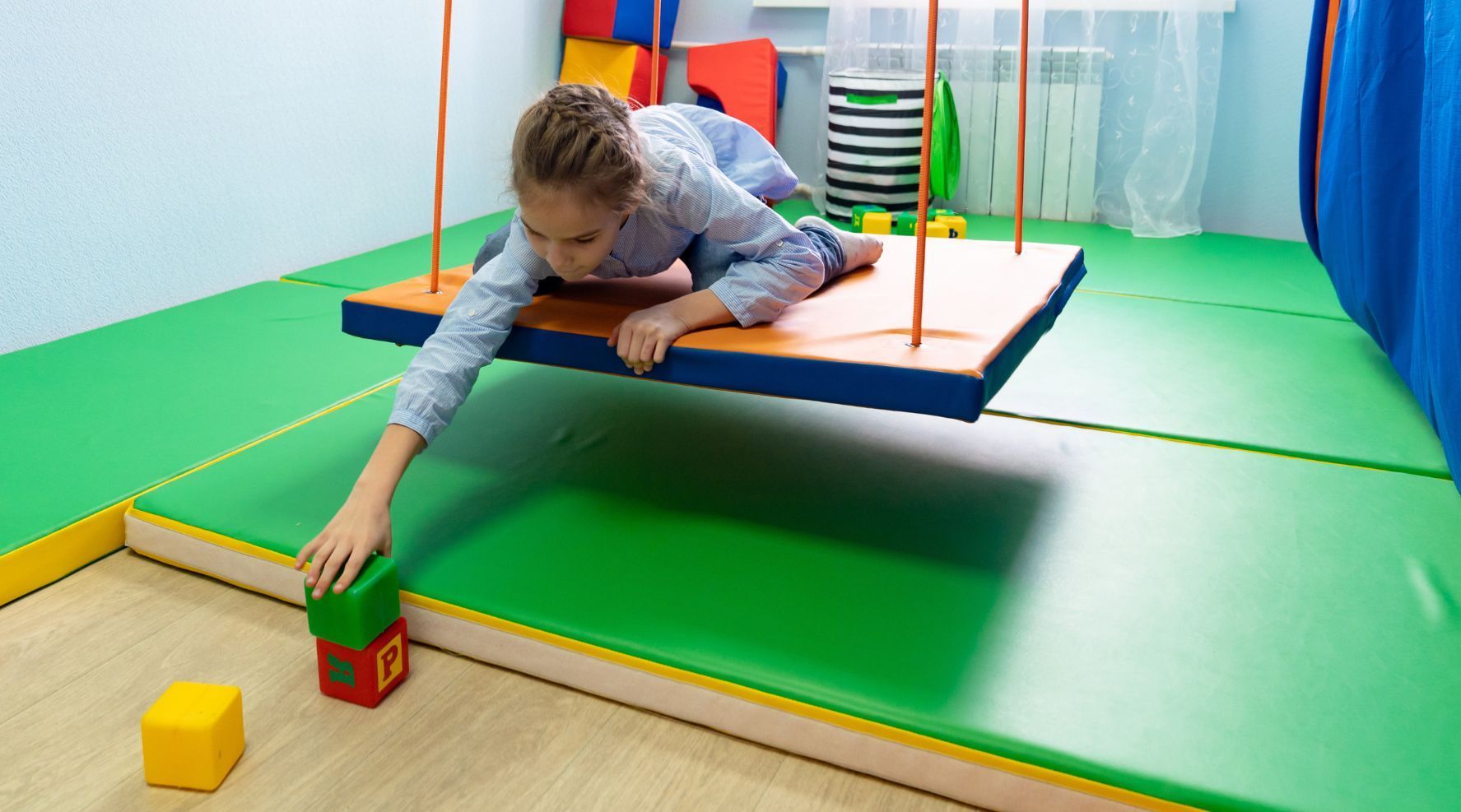The History of Treatment for Children With ASD
The earliest known reference to autism was in the early 1900s when Swiss psychiatrist Eugen Bleuler first used the term “autism” to describe mental states of withdrawal and isolation.
In the early 20th century, treatments for autism were often harsh and inhumane. But things have come a long way since then—learn more about the history of treatment for children with ASD.
What Is ASD?
Autism spectrum disorder (ASD) is a developmental disability that affects communication, behavior, and social interaction. People with ASD have difficulty understanding and responding to the world around them. It’s estimated that 1 in 59 children is diagnosed with ASD in the United States.
ASD is a spectrum disorder, meaning that it affects people differently and has different levels of severity. As
Dr. James Coplan explained back in 2014, levels of severity exist along a continuum, and symptoms may change over time. People with ASD can have mild to severe difficulties in social, communication, and behavior areas. As they age, their symptoms can look more like mental illnesses such as anxiety, depression, or even schizophrenia. Dr. Coplan argues that trying to compartmentalize these conditions doesn’t make sense, as they are all linked through biology and genetics.
Clinicians and researchers disagree about the efficacy of lumping several distinct disorders onto a “spectrum.” While some argue that having one diagnosis simplifies the diagnostic process, others argue that it can lead to underdiagnosis and oversimplification of complex conditions. As Dr. Coplan has pointed out, the truth is that no bright line exists between autism and “normal.” Every person with ASD is unique, and the diagnosis should be tailored to each individual’s needs.
The History of Treatment for Children With ASD
Early 20th-century treatments for autism were often harsh and inhumane. Doctors frequently recommended institutionalization. They tried other often abusive and largely ineffective treatments in their quest to “cure” autism.
Early Interventions
Electroconvulsive Therapy
Early interventions for autism began in the 1920s with electroconvulsive therapy (ECT). This treatment involved passing electrical currents through the brain and was used to treat a variety of mental illnesses. However, people later found that it had no benefit, and ECT has since been discontinued as a form of treatment.
Dietary Changes
Many parents of children with ASD may think that special diets for their children are a relatively new phenomenon. But changes in diet as a treatment for autism began as early as the 1920s. Some physicians advocated for a gluten-free, casein-free (GFCF) diet to treat autism as early as the 1940s. This was because they noticed the absence of celiac disease in malnourished children who lacked wheat in their diet due to wartime shortages.
The gluten-free and casein-free diet is still a popular autism treatment today, but research on its effectiveness is inconclusive. Other people have proposed other dietary treatments, such as the specific carbohydrate diet (SCD), which eliminates starches and sugars from the diet to reduce inflammation in the gut. The effectiveness of these diets in reducing symptoms of autism and autistic behaviors is largely based on anecdotal reports.
Mid-Century Approaches
Behavioral Interventions
In the 1950s and 1960s, behaviorists began developing interventions focused on changing behaviors through reinforcement techniques such as token economies. Token economies involve providing rewards for some behaviors to encourage them while discouraging undesirable behaviors.
Psychological Approaches
Also in the 1950s and 1960s, Austrian psychiatrist Hans Asperger described a milder form of autism among children who had difficulty understanding social cues but were often highly intelligent. His work laid the foundation for the definition of Asperger’s syndrome.
During this time, many treatments were based on Bruno Bettelheim’s psychoanalytic theory that autism was caused by “refrigerator mothers.” Widely accepted at the time, the theory has since been thoroughly discredited.
Applied Behavior Analysis
In the 1970s and 1980s, behavioral approaches became more popular. Applied behavior analysis (ABA) uses positive reinforcement to shape and modify behavior. ABA may include functional communication training, social skills training, visual supports, self-monitoring, and data collection. Token economies provide rewards to encourage some behaviors and discourage others.
Auditory Integration Training
Auditory integration training (AIT) developed in the 1980s as a treatment for autism. It involves listening to specific sounds and tones to improve auditory processing skills. Although some research has suggested that AIT may be helpful, there is still no consensus on its efficacy.
More Recent Interventions
Many current treatments combine behavioral, educational, and medical approaches. Therapies such as speech therapy, occupational therapy, sensory integration therapy, and social skills training are widely used as part of comprehensive educational and treatment plans.
In addition to these treatments, some parents use dietary changes or nutritional supplements. Others turn to medication, which in some cases has been shown to improve concentration and attention.
Medication is not typically a standalone treatment for autism; however, it can help manage some of the related symptoms, such as anxiety, depression, and attention deficit hyperactivity disorder (ADHD). It is important to work with a doctor to create an individualized plan that considers the person’s specific needs.
Current Approaches
Understanding Autism’s Genetic Roots
Today, researchers are looking to uncover the genetic roots of autism. With advances in technology and genetics, scientists have discovered dozens of genes associated with ASD. This has led to a greater understanding of how the disorder develops and improved treatment options for those affected by it.
Communication and Social Skills Training
Communication and social skills training helps children with ASD understand social cues and build relationships.
Therapies such as cognitive behavioral therapy (CBT) and dialectical behavior therapy (DBT) help individuals develop coping strategies to manage anxiety. It also teaches them how to regulate their emotions in stressful situations so they can behave in socially acceptable ways.
Sensory Skills Development and Play
Sensory rooms and playgrounds provide a safe, structured environment to help autistic children and adults regulate their emotions and behavior. These spaces often have soft surfaces, calming music, and various tactile materials to explore.
Home sensory gyms and structured activities such as yoga or dance classes can help children learn how to better respond to their environments.
Neurodiversity and Autism Activism
Finally, there is a growing movement of autism activists who believe that autistic people should be accepted and embraced for their differences. These advocates promote the idea of neurodiversity, which recognizes that different forms of neurological wiring are a normal part of human variation and should not be seen as something to be “fixed” or “cured.”
The “Nothing About Us Without Us” movement is an important part of this advocacy as well. It seeks to give people with disabilities autonomy and control in decisions that affect their lives.
Autism is a complex disorder that affects individuals differently depending on their unique combination of strengths, weaknesses, and interests. The continuing evolution of the history of treatment for children with ASD recognizes the potential of every individual with autism, striving to create environments where each autistic person can thrive.

Contact Royalty Sensory Gyms Today
Now's the time to start!
Contact Us
Thank you for contacting Royal Sensory Gyms.
We will get back to you as soon as possible.
Please try again later.
Hours of Operations
- Mon - Fri
- -
- Sat - Sun
- -
All Rights Reserved | Royal Sensory Gyms




